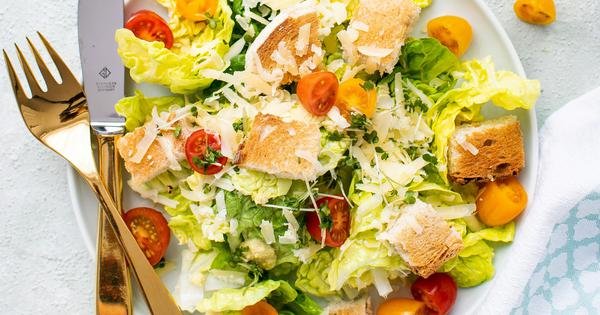Natural Ways to Boost GLP-1 for Weight Loss

Many people want to lose weight without using medications like Ozempic and Wegovy. If you’re one of them, you’ll be glad to know that certain nutrients and dietary strategies can naturally mimic the effects of these drugs.
Eating more fiber and monounsaturated fats (found in olive oil and avocados) can help. So can the time of day you eat, the order of foods, eating speed, and even chewing. These can all stimulate the production of the hormone responsible for the effects of semaglutide drugs.
As a family physician with a PhD in nutrition, I use the latest nutrition science to help my patients. A strategic approach to weight loss, based on the latest science, is better than old-fashioned calorie counting. It also uses the same biological mechanisms that make weight-loss drugs successful.
How Semaglutide Medications Work
Semaglutide medications increase the levels of a hormone called GLP-1 (glucagon-like peptide 1). This hormone makes us feel full and slows digestion. These drugs also decrease levels of an enzyme called DPP-4, which inactivates GLP-1.
As a result, the “stop eating” hormone, which usually lasts only a few minutes, can last for an entire week. This creates a semi-permanent feeling of fullness, leading to decreased food intake and weight loss.
But medications aren’t the only way to raise GLP-1 levels.
What You Eat
Fiber, found in beans, vegetables, whole grains, nuts, and seeds, is the most notable nutrient that can significantly increase GLP-1. When fiber is fermented by the trillions of bacteria in our intestines, the byproduct, called short-chain fatty acids, stimulates the production of GLP-1.
This may explain why fiber consumption is one of the strongest predictors of weight loss. It has been shown to enable weight loss even without calorie restriction.
Monounsaturated fats, found in olive oil and avocado oil, are another nutrient that raises GLP-1. One study showed that GLP-1 levels were higher after eating bread with olive oil compared to bread with butter. However, bread with any kind of fat raises GLP-1 more than bread alone.
Another study showed that having an avocado with your breakfast bagel increases GLP-1 more than eating the bagel alone. Nuts high in both fiber and monounsaturated fats, like pistachios, have also been shown to raise GLP-1 levels.
How You Eat
The specific foods and nutrients that influence GLP-1 levels are only half the story. GLP-1 is a good example of how it’s not just what you eat that matters, but also how you eat it.
Studies show that meal sequence—the order foods are eaten in—can impact GLP-1. Eating protein before carbohydrates results in a higher GLP-1 level compared to eating carbohydrates before protein. Eating vegetables before carbohydrates has a similar effect.
Time of day also matters because, like all hormones, GLP-1 follows a circadian rhythm. A meal eaten at 8 a.m. stimulates a more pronounced release of GLP-1 compared to the same meal at 5 p.m. This may partly explain why the saying “eat breakfast like a king, lunch like a prince, and dinner like a pauper” is backed by evidence that shows greater weight loss when breakfast is the largest meal of the day and dinner is the smallest.
The speed of eating can matter too. Eating ice cream over 30 minutes produces a significantly higher GLP-1 level compared to eating ice cream over five minutes. However, studies looking at blood sugar responses have suggested that if vegetables are eaten first, the speed of eating becomes less important.
Even chewing matters. One study showed that eating shredded cabbage raised GLP-1 more than drinking pureed cabbage.
Not as Potent as Medication
While certain foods and dietary strategies can increase GLP-1 naturally, the effect is far less than what is achievable with medications. One study of the GLP-1 raising effects of the Mediterranean diet demonstrated a peak GLP-1 level of approximately 59 picograms per milliliter of blood serum. The product monograph for Ozempic reports that the lowest dose produces a GLP-1 level of 65 nanograms per milliliter (one nanogram = 1,000 picograms). So medications raise GLP-1 more than one thousand times higher than diet.
Nevertheless, when you compare long-term risk for diseases like heart attacks, the Mediterranean diet lowers risk of cardiac events by 30 percent, outperforming GLP-1 medications that lower risk by 20 percent. While weight loss will always be faster with medications, for overall health, dietary approaches are superior to medications.
Strategies for Natural Weight Loss
The following strategies are important for those trying to lose weight without a prescription:
- Eat breakfast
- Make breakfast the largest meal of the day (or at least front-load your day as much as possible)
- Aim to eat at least one fiber-rich food at every meal
- Make olive oil a dietary staple
- Be mindful of the order you eat foods in; consume protein and vegetables before carbohydrates
- Snack on nuts
- Chew your food
- Eat slowly
While natural approaches to raising GLP-1 may not be as potent as medications, they provide a drug-free approach to weight loss and healthy eating.
Mary J Scourboutakos is Adjunct Lecturer in Family and Community Medicine, University of Toronto.
This article was first published on The Conversation.



